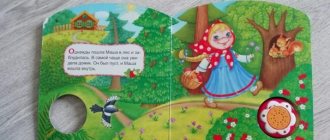What great anxiety the unknown causes! It is second only to the fear of death and public speaking. A small child is faced with changes every month, they can worry him. Considering that they do not depend on him, this further increases the baby’s basal anxiety. A daily routine is the most important tool for making a child’s life more orderly, and therefore safer.
Baby 4 months
The importance of a daily routine
A daily routine allows you to organize not only the life of the child, but also the parents, who cease to be dependent on the slightest cry of the child and can plan their day, getting rid of their own anxiety.
Baby 4 months
Also, a daily routine from a very early age trains the baby’s discipline and willpower, which primarily determine his success in life. The main thing is not to overdo it and adapt to the child’s individual preferences.
Basic principles of the daily routine of a four-month-old baby:
- Individuality. Children's biorhythms must be taken into account. Be guided not by your ideas about what the child needs, but try to guess what the child wants.
- A reasonable compromise. The older the child, the more strict the daily routine is acceptable. At the same time, the main principle is to do what you can. The daily routine is not a strict law, but it should be.
- Subsequence. If parents first strictly control the daily routine, then violate it themselves, this harms the child and accustoms him to the idea that it is not necessary to follow the promises made to himself.
- Flexibility. A logical continuation of the previous point. Balance is also needed here. On the one hand, it is undesirable to change the regime, because it makes the child undisciplined and makes him nervous (after all, one of the functions of the regime is to ensure stability). On the other hand, the child grows, his needs and desires change, to which the plan must be adapted.
The basic principles of creating a routine may at first glance contradict each other. But all life is woven from opposites. It is the resolution of contradictions that forms creativity, without which it is impossible to raise a child.

Baby's wakefulness 4 months
Common mistakes parents make when getting used to a daily routine:
- Not taking children's biorhythms into account. At first, the child may not understand what the parent wants from him, especially if his biological clock is currently set to a different time.
- They interfere with sleep when the child needs it. Parents often take a literal approach to scheduling. If the plan says that the baby is awake at this time, then it should be so. It is not right. A baby up to 6 months should sleep about every two hours. Otherwise, he will become nervous and interfere with the peace of his parents.
Interesting. As a child grows, less time is needed to sleep and more time is needed to explore the world. At the same time, the components remain the same: sleep, food, natural needs, games, massage.
Daily routine of a 4 month old baby
The daily routine is very important not only for the baby, but also for the parents. Child neurologists and psychologists believe that a child who grows up in accordance with the daily routine is calmer, quickly gets used to sleeping through the night, and in the future he will not have problems adapting to the strict schedule of kindergarten and school. Parents get the opportunity to plan their time.
When accustoming your baby to a daily routine, it is important to remember: the parents create the routine, and the child adapts and gets used to it.
Child and regime - video
Accustoming your baby to a daily routine
2 month old baby's daily routine
The main rule that must be followed if you want to create a routine for a 4-month-old baby: if the child wants to eat and sleep, this must be given to him. In this case, the breast is given to the baby every 3 hours. If you do this more often, the milk will not have time to ripen and will be of poor quality. The result is an eternally hungry child who also eats a lot.

Cheerful baby 4 months
If your baby is breastfed less often, he will also be hungry and thirsty. In addition, the emotional connection between mother and child is disrupted.
Important! Accustoming a child to a daily routine should not be done by force.
Before you create a daily routine for a 4-month-old baby, you need to record the time of all aspects of his life. If the child wanted to eat - indicate when he did it. I cried - write down when. You can make an Excel table with the time, type of activity and comments from parents. Synthesize the obtained data and create a regime based on them.
As the child grows, monitoring of his activity also needs to be carried out to revise the schedule.
There are several recommendations on how to accustom your child to a routine. Some of them are given by the famous doctor Komarovsky:
- Each age has a norm of wakefulness that cannot be exceeded. At 4 months this is 9 hours a day. In this case, 4-5 hours of sleep should fall during the day (they should be divided into three times), the rest is night sleep.
- Too much sleep is just as bad as not enough sleep. In this case, the child eats less, which negatively affects his health.
Thus, it is not difficult to accustom a child to a routine if his needs are taken into account.
Where to start first?
Porridge, vegetable purees, and fruits can become the first complementary foods. It all depends on what child’s problem needs to be solved. For example, for overweight babies who are bottle-fed, vegetable complementary feeding will be useful, as it will help stop weight gain and replace some of the basic formula feeding techniques.
If a child suffers from significant underweight, then it is better to choose cereals as complementary foods. If your baby suffers from constipation, then fruit purees, juices or decoctions from them will help solve the problem.
Among vegetables, a 4-month-old baby is allowed zucchini, potatoes, and any varieties of cabbage, except white cabbage. These vegetables are the least allergenic, easily digestible and contain useful vitamins. When a child has tried puree from these vegetables, his menu can be diluted with pumpkin, carrots and tomatoes. You can add vegetable oil to vegetable purees, but not more than 4-5 grams. You shouldn’t add salt to your food – vegetables contain all the necessary “taste improvers”.
Among fruits, preference should be given to apples, bananas, prunes, pears and peaches. It is important that the fruits are seasonal and fresh. There is no need to sweeten the finished puree - the fruit contains enough sugar to satisfy the baby's needs.
Porridge for 4-month-old babies is prepared in water without salt, sugar or oil. They must be liquid, gluten-free, single-component. It is better to give preference to buckwheat, rice and corn porridges.
Pure water (daily intake – 100 ml), non-concentrated decoction of dried fruits and apple juice are allowed as drinks. All drinks, except water, should be introduced into the diet after purees and cereals.
Mode example
Daily routine of a one-year-old child
The approximate regimen of a child in the fourth month is as follows ( it must be constantly adapted to the changing child):
- 6:00. Waking up, hygiene procedures, first feeding of the baby in the fourth month.
- 8:00. First dream.
- 9:00. Second feeding, educational games, communication with adults.
- 11:00. Walk in the fresh air. The child is sleeping at this time.
- 12:00. Third feeding, communication, educational games.
- 13:00. Daytime sleep.
- 15:00. Communication and games. Fourth feeding.
- 18:00. Fifth feeding.
- 20:00. Hygiene procedures.
- 21:00-06:00. Night sleep.
Attention! This is the chart of a baby who is in his fourth month. If the baby is already 4 months old, it needs to be modified. You can increase the number of hours of sleep at night and eliminate one feeding.
Fundamentally, the daily routine of a 4-month-old child who is bottle-fed is no different. At the same time, mom has fewer restrictions.
Approximate daily routine for a 4 month old baby
- 6:00–8:00 – getting up, washing, changing a diaper, gymnastics, air baths and first feeding.
- 8:00–10:00 – morning sleep.
- 10:00–12:00 – massage, developmental exercises and games, second feeding.
- 12:00–14:00 – sleep in the fresh air.
- 14:00–16:00 – third feeding, familiarization with surrounding objects, educational games, communication.
- 16:00–18:00 – sleep, walk.
- 18:00–21:00 – games, communication, bathing, fourth feeding.
- 21:00–22:00 – hygiene procedures, preparation for night sleep.
- 22:30–23:00 – fifth feeding.
- 23:00–6:00 – night sleep.
Few people manage to strictly adhere to a daily routine, and this is not necessary. It is important to put the child’s individual requirements and preferences first and adapt to them. Each family will make its own adjustments and amendments. The daily routine should be convenient for the baby, not his parents. But still, some important points should remain unchanged in the daily routine:
- The intervals between feedings should be at least 4 hours;
- Daytime sleep should be approximately 6 hours in total.
Baby's sleep in the fourth month
Baby's daily routine at 6 months
At four months, small “owls” and “larks” can be distinguished among infants. Children at this age sleep on average about 16 hours, of which 10 are nighttime sleep, 6 are daytime sleep. In general, there is a decrease in the number of daytime hours in favor of night hours.

The baby is sleeping
As for how many times a child sleeps during the day, everything is individual. The baby can nap four times, maybe two, if desired.
Although the approach to the baby in the fourth month should be individualized, periods of wakefulness should alternate with periods of activity. If your child has problems sleeping at night, you can put him to bed later. It is important to ensure that the baby does not fall asleep early.
Features of artificial and breastfeeding at the age of 4 months
The number of feedings, compared to three months of age, is reduced and is five times a day. Breastfed babies drink approximately 1000 ml of milk (200 ml at a time). The baby will be full approximately 3.5–4 hours after eating. The feeding regimen at 4 months with artificial feeding is the same, except that the break is at least 4 hours. Babies receiving formula must be supplemented with water, while infants do not need this.
It is easy to calm a breastfed baby by simply giving him the breast during whims or illness. This method is not suitable for artificial drinkers, since the amount of mixture drunk per day is limited.

At four months the baby is fed exclusively on breast milk or formula
If mother's milk is insufficient or lacks necessary substances, the baby can receive mixed feeding. Meals occur strictly by the hour and also five times a day. The baby eats approximately 500 ml of breast milk and 500 ml of formula.
For babies who are on mixed feeding, it is better to give the mixture before bedtime. It is more nutritious than breast milk, so your baby will sleep better.
It is too early to introduce complementary feeding at this age: in children receiving breast milk, it appears at 6 months, in formula-fed infants - at 5. Only in rare cases, on the recommendation of a pediatrician, porridge or vegetables can be recommended at 4 months.
How to feed a baby at 4 months - video
Baby food
A four-month-old baby is fed five times due to the fact that the baby can eat more at a time.
Baby 4 months He doesn't need complementary feeding while he is pregnant because he has enough milk.
If the child is bottle-fed, then instead of taking formula, he can be given complementary foods in the form of vegetable puree or grated cottage cheese with kefir.
The total volume of the mixture is 1 liter per day, the child needs about 200 ml at one time. When choosing complementary foods, you need to pay attention to the baby’s tastes and introduce new dishes gradually. For the first time, one teaspoon is enough. After about a week, you can give 150 milliliters at a time. If such an amount is eaten by the baby with joy, one feeding can be replaced with complementary feeding.
If the mother produces little milk, mixed feeding is used. Then the baby eats both breast milk and formula. The proportion during mixed feeding is individual. On average, the ratio is as follows: breast milk - 500 milliliters, formula - 400, 150 milliliters goes to complementary foods.
Baby's nutrition at 4 months
Changes are also occurring in diet. Compared to other months, the baby can now be fed five times a day, that is, every 3.5-4 hours. Breastfed babies do not require additional complementary feeding, since breast milk still provides the baby with the necessary nutritional components. This is due to the fact that its composition changes with the child’s growth, constantly adapting to his needs.
At 4 months, the baby is able to suck more milk and stay full longer, so meals are reduced. Now the baby is able to drink up to one liter per day. At night, children of this age can go without their favorite food for up to 7 hours. A single serving is up to 200 ml, both for breastfed and bottle-fed infants.
But infants fed formula milk are already provided with complementary foods, mainly cottage cheese, special fermented milk products for children, and gluten-free water porridge. It is allowed to use vegetable purees for this purpose, containing enough fiber, which prevents constipation and generally has a beneficial effect on digestion. Later, children are allowed to give juices and fruit purees, but in small quantities.
When planning the optimal daily routine for a child at 4 months, it is necessary to take into account that the first complementary foods often cause digestive disorders in the baby, which can disrupt the entire daily routine. This, first of all, suggests that the general rules of this important process are not followed:
- Any products should be introduced into the baby’s diet carefully and in minimal dosages, since any of them can be an allergen for the child’s body. Over the course of days, the baby can receive a new dish in the amount of 1/2 small spoon. After making sure that the child feels well, the dose can be doubled, but this should be done little by little.
- First, a new dish is given, and only then the usual milk formula. Subsequently, baby food is systematically replaced with regular food.
- You cannot give your child two unfamiliar foods at once at one feeding. If any trouble happens, it will be difficult to determine what exactly caused it.
- The introduction of additional dishes can only be carried out if the baby is healthy and does not have to be vaccinated.
- All ingredients should be a mixture crushed to a mushy state, homogeneous, without solid components.
- Children are given first courses as complementary foods in the morning and afternoon.
- It is worth understanding that the child should like the food, so there is no need to force him to eat; it is better to try replacing the portion with something else.
There is probably no need to remind you that all the ingredients must be fresh, the cooking utensils must be sterile, and the prepared portion must be warm (+36-37 degrees).
Physical development and hygiene
Babies of this age require daily exercise to develop the muscular system, and this is along with morning exercises. Five-minute sessions three times a day will help him learn to crawl and sit faster.
These exercises can be done at different times, but an hour before meals:
- to strengthen the back, it is necessary for the baby to grab his mother’s fingers, and then pull him towards himself several times;
- placing the child horizontally on a flat surface, carefully roll him from his back to his tummy and back - this promotes the development of the muscles of the abdomen and spine;
- When placing the baby on the floor with his stomach down, place his hands under his feet so that he can push off from them; to avoid slipping, you should put a clean rug under him, and a sheet or blanket on top.
It is very important to start hardening a child from a very early age, and by four months he should already know what it is.
The following procedures can be carried out:
- Rub the baby's skin first with a dry mitten made of natural terry until the skin turns red. After a week, you can soak the cloth and do wet wipes, the water should be at body temperature, this takes 2-3 minutes. After every 3-4 sessions, the water temperature is lowered, gradually bringing it to 30 degrees.
- Air baths are also extremely useful, but the room should be warm - about 21-22 degrees. The child is undressed and left naked for 7-10 minutes, twice a day. Procedures such as morning washing, hygiene during the day when changing diapers, and ritual evening bathing continue to be mandatory.
The importance of walking with your baby
Walking with your child is necessary for many reasons. Outdoors, the air contains much more oxygen; in addition, there is no dust or chemical elements used for cleaning. This is also, in its own way, hardening, since when leaving the walls of the house, the child experiences changes in temperature and humidity, and this stabilizes the functioning of his immune system.
Sunshine in small quantities is a preventive measure for children against many diseases and hypovitaminosis. But that’s not all – during walks the baby receives new information and learns about the world.
Pediatricians recommend walking a four-month-old baby several times a day in any weather, as long as there is no severe frost, wind or rain. In case of light rain, a special raincoat attached to the stroller will help protect the child, but this is not the best option for the baby. The material does not allow air to pass through, which means it creates a greenhouse effect, so the attribute is suitable only in cases where rain takes mother and baby by surprise.
When the street is warm and clear, the walking time can be increased, but on average it should take about an hour and a half. Sometimes the duration of a walk can be reduced, despite the regime. Mom should pay attention to symptoms such as redness of the nose, pallor, cold hands and restless behavior of the baby - perhaps he is cold or feels unwell for other reasons.
Active wakefulness
At the age of four months, it is very useful to develop the baby's various abilities. Such games and activities will improve his senses and help him recognize the world around him:
- simple bright toys are needed for the development of tactile sensations and color perception - one object can combine up to three different shades with clear boundaries;
- thanks to the rapid formation of the hearing organs, the baby is able to perceive and distinguish different sounds well, he can play beautiful and rhythmic melodies, sing songs and read fairy tales;
- the baby can already look at the pictures with interest, the main thing is that they are large and clear;
- At 4 months, you can purchase educational rugs and mobiles for your toddler, which will contribute to the development of vision, hearing, and fine motor skills, because at this moment he can already hold objects in one hand.
A carefully designed daily routine for a 4-month-old child, which thoroughly takes into account the physiological and emotional needs of the baby, quickly adapts his body to the constantly changing conditions of real life, helping to develop harmoniously and delight parents with new skills every day.
Wake mode
Waking is the period when the child learns about the world. All parental actions should be aimed at this: walks, educational games, massages, bathing. Each of these components of child care can be filled with educational activities.
Walks
At 4 months, walks in any non-extreme weather conditions are possible. It is not advisable to walk during extreme heat and frosts of more than 15 degrees. Strong gusts of wind can also harm a child. In all other cases, you need to regularly take your baby outside, even when it’s raining.
It is recommended to take two walks lasting 1.5-2 hours. Moreover, it is advisable to carry out one of them during sleep.
One of the walks should resemble an excursion. The child needs to be introduced into this fascinating world, shown everything that is possible, told from an early age what everything is called. The baby must explore the world with all his senses. Therefore, you can let him try, smell, touch, look, hear things that will not cause harm. Moreover, encouraging the baby’s cognitive interest will greatly help him in the future.
Activities and educational games
This is an important component of communication with your baby. There are many games designed to develop a child. For example, you can give an object to a baby and name it. After a while, you can ask the child, for example, where his toy is, he will start looking for it. This is necessary for further speech development.
Gymnastics and massage
At 4 months, the number of exercises that need to be performed with the child increases. At this age, he tries to independently change his body position. Gymnastics is aimed at helping the child quickly begin to walk, sit down, be able to turn independently, and so on.
Bathing
To the standard bathing procedures at 4 months, you need to add hardening. It can be done using air baths or wet rubbing. The first are carried out twice a day, their duration is 10 minutes. It is important that the room temperature is about 22 degrees.
Wet rubbing is done using a mitten soaked in warm water. Every three sessions, the water temperature decreases by a degree, up to 30 degrees.
Wakefulness

Just a couple of months ago, these periods were short, the child actually woke up only to eat. But now he doesn't sleep about 8 hours a day. Therefore, your communication is not limited to feeding - the baby wants attention. And he really wants to explore the environment around him.
The physical development of a toddler at 4 months determines these periods in the infant’s schedule. He is aware of his actions; these are no longer chaotic movements of arms and legs, but an exploration of the capabilities of his body.
The baby’s vision is no longer blurry, he can distinguish between red and yellow objects - it is with these colors that color perception begins. The child's ear actively differentiates sounds. If previously the barking of dogs and the signal of a mobile phone were perceived as a continuous noise effect, now they are fundamentally different sounds. Everything that comes to the baby's hand is actively touched. This is how the tactile sensitivity of the hands develops, on which the development of the speech apparatus directly depends. All these opportunities can and should be used during the period when the little one is alert and active. Talk to your child, show him around and name things. At home, on a walk, in the store. The more often you comment on your actions and label objects, the more interesting it will be for your baby. And the sooner he himself will begin to speak.

Already at this age, all kinds of nursery rhymes play a huge role. Use them for washing, dressing, bathing, and massage. This will not only entertain the baby, but will also make any activity interesting and enjoyable, even if the baby is not eager to wash or get dressed. The same nursery rhymes can be used in finger games. The good old white-sided magpie, “ladushki”, is not only a finger massage and the development of tactile perception. These are also the first games that by the age of six months the baby will be able to play on his own, as soon as he hears a familiar rhyme.
Another game that will help diversify your waking hours is body parts. Touch the baby's legs, arms, tummy, back, and head, calling them by their proper names. This game is appropriate to do during a massage or children's gymnastics. And the procedures will be more fun, and the baby will receive new information, even if you don’t notice it now.
Violations of the daily routine
The reasons for the failure of the daily routine may be the irresponsible attitude of parents, violation of the rules of nutrition and sleep described above. For example, if complementary foods are introduced abruptly, the baby may become unwell. Also, the daily routine may be disrupted due to sleep.
It is necessary to establish the cause of the violation of the daily routine in a newborn or infant. If it occurs due to illness, you should consult a doctor. If the reason lies in improper sleep, it is necessary either to reduce the number of hours the child sleeps during the day or to go to bed earlier.
If the reason is complementary feeding, then a violation of the daily routine may occur due to incorrect introduction of a new dish into the diet. As a result, the child may become ill and have no time to sleep. It is also forbidden to suddenly change the diet.
The article discusses how to accustom a baby to a daily routine, why it is needed, what its components are, what is new, compared to three months. An individual approach is important here. The child has his own biorhythms, his schedule must be adapted to them. Then it will be much easier to accustom your baby or toddler to a routine.










